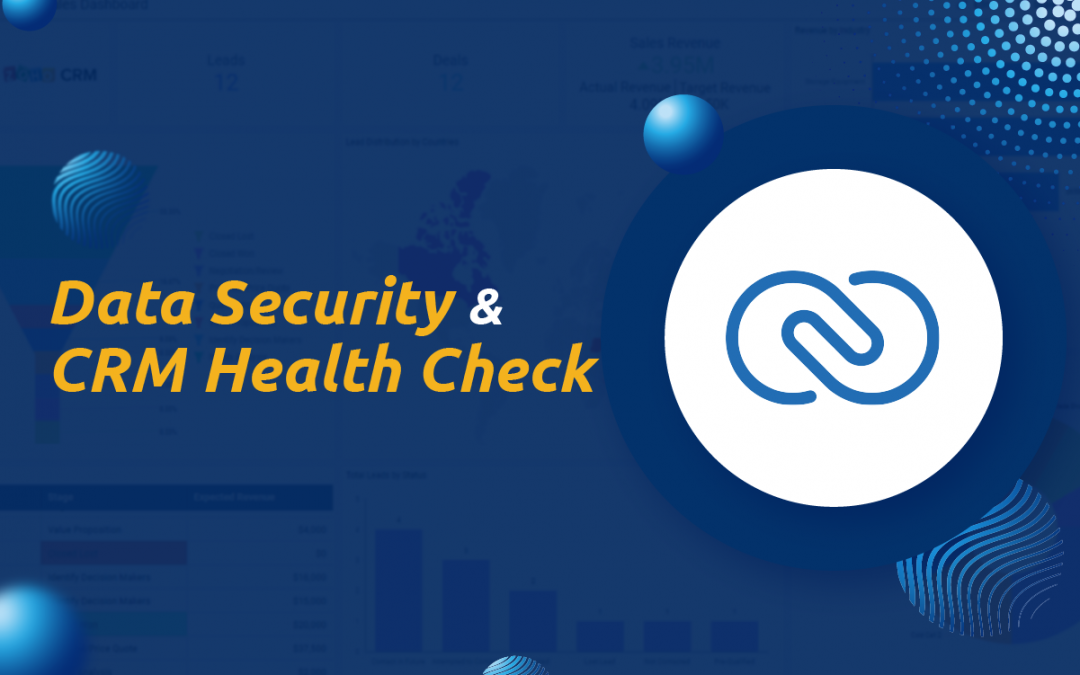How Healthy is Your CRM?
When was the last time you checked the health of your CRM?
A CRM Health Check is a comprehensive review of your CRM data, systems, processes, and security features. The goal is to make sure that the data in your CRM is clean, useful, and relevant, and can be used to drive sales and improve customer relations.
CRMs are an investment in your company’s ability to interface with your clients, and no doubt implementing one was a major event for your organization. But maintaining a CRM is a lot like maintaining a car; a quality build does mean nothing will ever break. It’s important to protect your investment in a CRM by performing the preventative and reactive maintenance required to keep it running smoothly.
How Do CRMs Become Unhealthy?
Over time outdated and duplicate data can and will crop up in your system. Unmaintained workflow rules can break, leading to client data being routed in inefficient ways or failing to route correctly at all resulting in increased response time and missed opportunities.
As users come and go or change roles within an organization, their user roles and permissions should be updated to reflect their new responsibilities. However, System administrators are human after all, and incorrect roles and profiles tend to slowly accumulate in any system. Incorrect user permissions in CRMs create the conditions for erroneous changes that can damage your system and put your data security at risk.
Additionally, inactive fields and inactive workflow rules create bloat in your CRM and create additional points of failure.
Hallmarks of a Healthy CRM
Here is what we all want out of our CRMs.
- Organized, relevant, and up-to-date data
- Well-structured workflow rules that contribute to your operational processes
- Accurate user roles and permissions across the entire organization
- Frequent backups to protect against system failure and bad actors
The Importance of Data Backup
An unfortunate fact of living in the digital age is the inherent threat of system failures and data breaches. If you think you’re immune to the fallout of cybercrime, consider this; the most protected companies and governments in the world have continually struggled to keep up with hackers breaching their cybersecurity protocols.
- LinkedIn, 2012: 165 million files leaked by a hacker
- Experian, 2013: 200 million records compromised by a cyber-imposter
- Marriott, 2018: 500 million customers affected by unauthorized access
- American Finance Corp, 2019: 885 million clients compromised
- Facebook, 2019: 540 million users affected by poor security
- Twitter, 2022: 5.4 million user accounts compromised
Small businesses are no different. According to the FCC, data theft has surpassed property theft as the number one reported form of fraud in the US and abroad.
How to improve the health of your CRM
Fortunately, for every potential threat to a healthy CRM, there are solutions to make it good as new. Let’s explore some of the steps you should be taking to improve and protect the health of your Customer Relations Management system.
Daily backups – Zoho offers biweekly backups for free, make sure these are configured and saved properly. There are third-party options that allow for completely automated daily backs. Get in touch with us to learn more.
Review deprecated custom functions and failures – Fields change, APIs get updated ad workflows evolve, all leading to potential problems with your functions executing properly. Be sure to review your failure logs and function list to see what is out of date.
Duplicate data review– There are some handy tools to prevent duplicate data but to some extent this is inevitable. Be sure you are deduping records regularly. Zoho has the ability to find and merge duplicates on limited criteria. Catalyst Connect has a few tools to assist with data management more efficiently, get in touch to discuss your use case.
Roles and profiles security review– Users change roles and Zoho is constantly adding new features. Be sure to review user roles, profiles, and data-sharing rules regularly to avoid surprises. When offboarding employees, it is crucial to ensure your organization is revoking access to all relevant Zoho apps, deactivating any API authentication tokens associated with that user, and terminating all active login sessions to protect the integrity of your CRM and data security. Be sure to review any active API integrations that were configured under that user and take note that they will no longer function when that user is deactivated.
Inactive workflow review– Over time your process will change and evolve. It is easier to simply deactivate a workflow rule, but over time your workflow rules can become a tangled mess. Make sure you refine and combine them regularly or consider using blueprints to help keep organized. It is best practice to have your IT department or system admin govern all workflows to ensure there are no conflicts.
Inactive field review– Much like workflow rules, fields can also become irrelevant. You can hide or remove these fields to keep your user interface neat and tidy. Just remember to review what workflows, custom functions, API integrations, email templates, and syncs are using this field so you can update them accordingly. Not doing this step can lead to big problems! For example, just one field missing from the CRM to Analytics sync will prevent the entire system from syncing.
Layout and related list optimization– As your system grows and becomes more automated be sure to go back to basics and review your layout rules to show or hide relevant information and clean up your tab views and related lists so users don’t get lost in your more robust system.
Many of these steps are general maintenance your IT department should be conducted regularly, while others are more robust operations that are best handled by our support department. Get in touch with us today to schedule a CRM security review!
